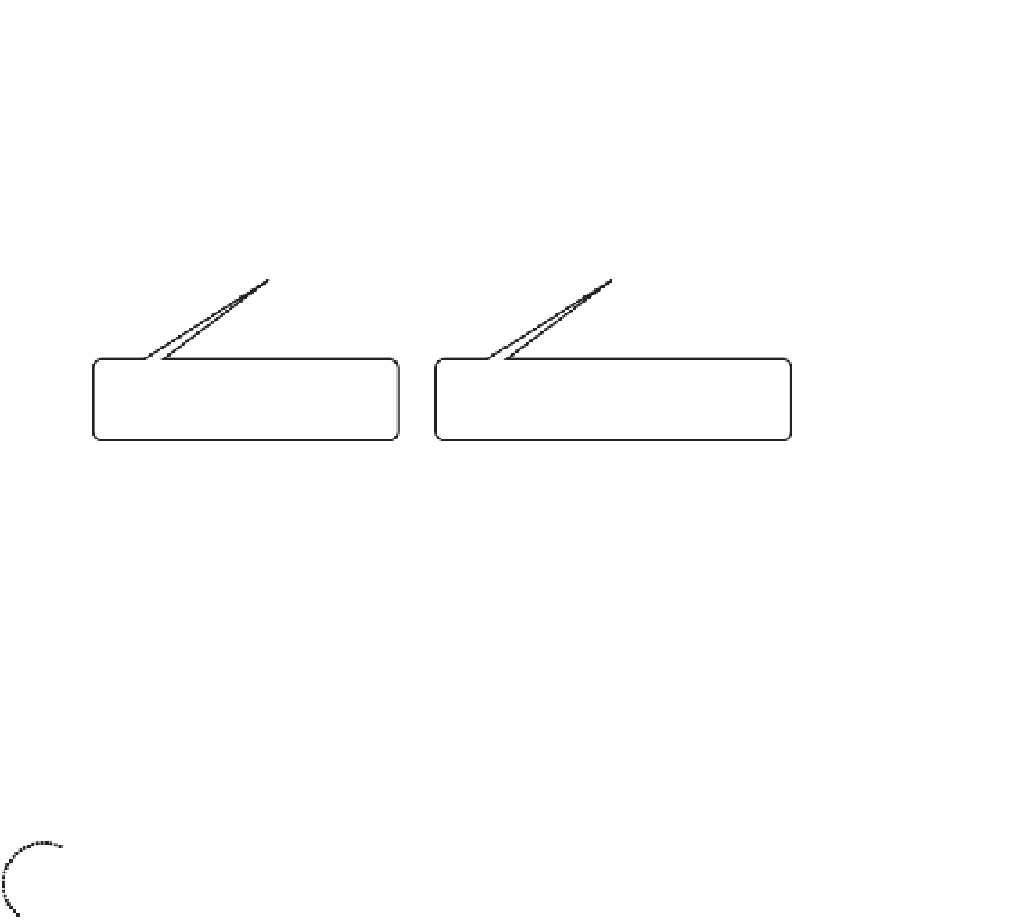Information Technology Reference
In-Depth Information
interdigit timeout period. You could also accomplish this objective by using some fancy
digit-manipulation techniques, which you learn about in an upcoming section.
Matching Inbound and Outbound Dial Peers
When a router receives a voice call, it must always match a dial peer in some way for the
router to process the call. Although this might seem like a simplistic statement, there is ac-
tually a lot of strategy that must be in place to accomplish this in both the inbound and
outbound direction. Take the scenario presented in Figure 6-10, which expands on the call
leg scenario that opened this section on dial peers.
dial-peer voice 2510 voip
destination-pattern 2510
session target ipv4:10.1.1.2
dial-peer voice 2510 pots
destination-pattern 2510
no digit-strip
port 1/0:1
Call Leg 1
Call Leg 2
Call Leg 3
Call Leg 4
10.1.1.2/24
FXS 1/0/0
T1 1/0
10.1.1.1/24
V
IP WAN
x1101
ROUTER_B
x2510
CME_A
dial-peer voice 1101 pots
destination-pattern 1101
port 1/0/0
dial-peer voice 1101 voip
destination-pattern 1101
session target ipv4:10.1.1.1
Figure 6-10
Inbound and Outbound Dial Peers
In addition to the call legs, Figure 6-10 displays the dial-peer configurations necessary to
complete end-to-end calls from x1101 to x2510 and vice versa. Now, matching the out-
bound dial peers is easy: Take the dialed digits and compare them to the destination pat-
terns under the dial peers you configured on the router to find the most specific match.
For example, if x1101 dials x2510, the CME_A router looks at its dial peers and realizes
there is a VoIP dial peer match directing the call to the IP address 10.1.1.2. When
ROUTER_B receives the call, it realizes the dialed digits are an exact match to the POTS
dial peer 2510, which causes the router to send the call out the T1 interface to the attached
PBX system. This process explains how the router matches the outbound dial peers (shown
in Figure 6-10 as call leg 2 and call leg 4), but how does the route match the inbound dial
peers? A router matches inbound dial peers through the following five methods:
Key
To p i c
1.
Match the dialed number (DNIS) using the
incoming called-number
dial peer config-
uration command.
2.
Match the caller ID information (ANI) using the
answer-address
dial peer configura-
tion command.






























































































